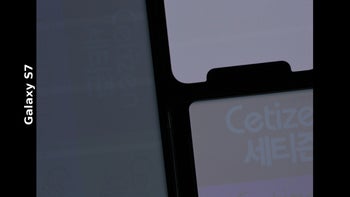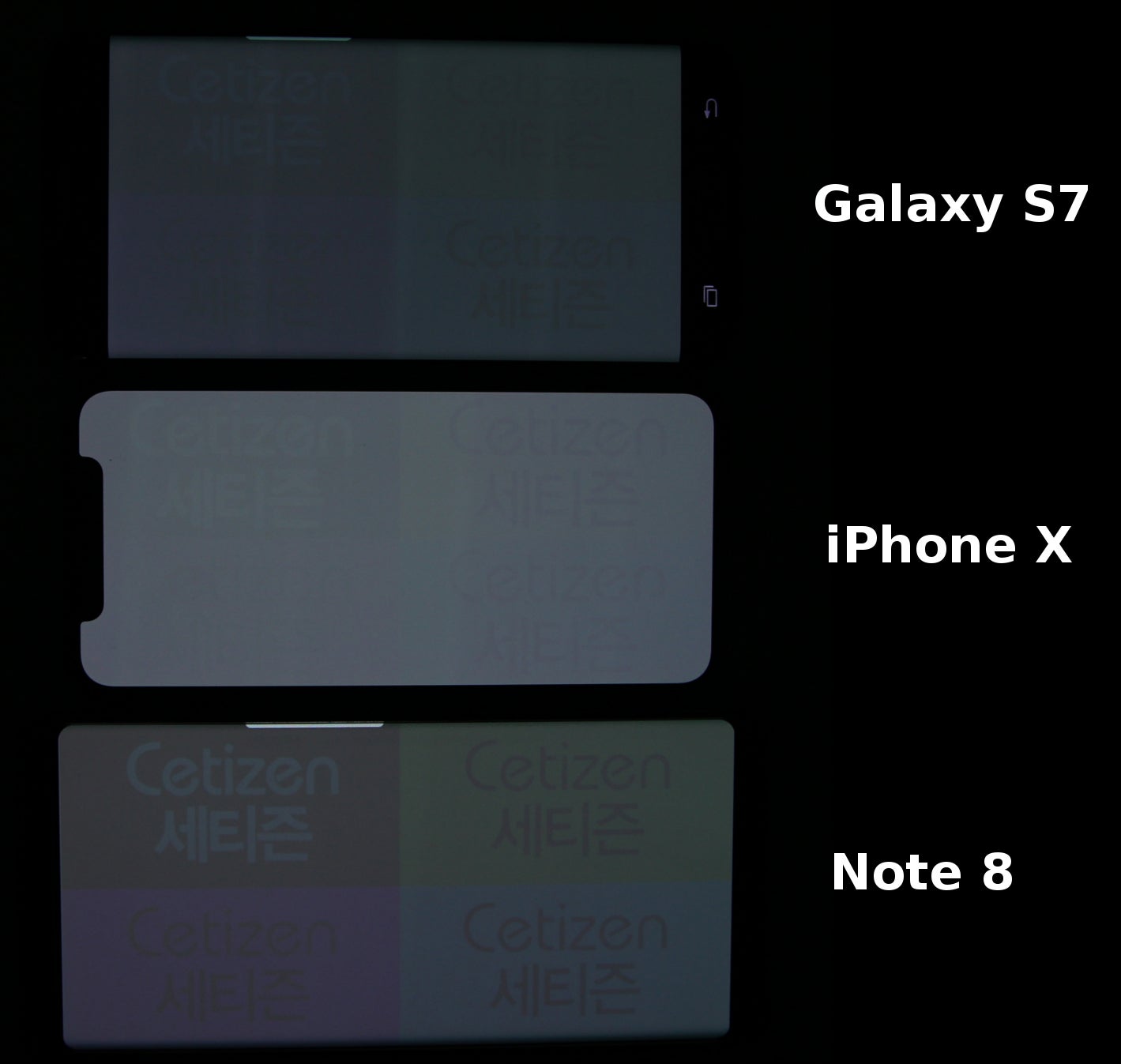Display burn-in trials: iPhone X vs Galaxy S7 vs Galaxy Note 8

Burn-in has been a buzzword throughout the latter half of 2017. Why? Because the brand-new iPhone X and the LG V series have joined the army of OLED-equipped phones, and the Google Pixel 2 XL, as awesome as it is, came with some display issues of its own.
What's burn-in? Basically, displaying the same static image over a long time will cause some of the display's pixels to wear out more than others, causing a “shadow” of that static image to remain on the screen forever. Yes, it sounds scary, but should we really be concerned about it? How long is “a long time”?
South Korean site Cetizen has performed a test with three OLED-equipped phones — the Samsung Galaxy S7, Samsung Galaxy Note 8, and iPhone X. The goal of the test is to determine how bad the burn-in can be after 500 hours of non-stop screen-on time with the same picture on each device.
So, what were the results? After keeping the same picture on all three phones for a total of 510 hours, the researcher pulled up an all-gray image on the devices and examined the damage. As you can see in the photo, all three phones show varying degrees of burn-in — this is now permanent. But the amount of burn-in varies between the three devices.
Now, some displays may be more prone to this than others since every display panel is unique. That's why we wouldn't draw any broad conclusions about the Note 8's burn-in issue being “worse” than the iPhone X. We'd need to test at least a hundred of each phone models to see some sort of trend. Also, we weren't performing that test, neither are we properly acquainted with the process.
What's burn-in? Basically, displaying the same static image over a long time will cause some of the display's pixels to wear out more than others, causing a “shadow” of that static image to remain on the screen forever. Yes, it sounds scary, but should we really be concerned about it? How long is “a long time”?
So, what were the results? After keeping the same picture on all three phones for a total of 510 hours, the researcher pulled up an all-gray image on the devices and examined the damage. As you can see in the photo, all three phones show varying degrees of burn-in — this is now permanent. But the amount of burn-in varies between the three devices.
The Note 8 seems to have been damaged the most — the burn-in is so clearly readable that you'd think it's an actual picture. The Galaxy S7 performed surprisingly well, considering it's 2016 technology. And, looking at the iPhone X, we see the least traces of burn-in, but they are obviously still there.
Now, some displays may be more prone to this than others since every display panel is unique. That's why we wouldn't draw any broad conclusions about the Note 8's burn-in issue being “worse” than the iPhone X. We'd need to test at least a hundred of each phone models to see some sort of trend. Also, we weren't performing that test, neither are we properly acquainted with the process.
But it's a good idea to keep in mind how long these phones had to be on for the issue to actually get where it is — 510 hours! That's constant screen-on time, no rest, no sleep. In normal, real-world scenarios, a smartphone-addicted poweruser will keep their device on for about 10 hours throughout the day. But they won't be looking at the same static thing over these 10 hours, too. So, assuming your phone isn't faulty,
What we are trying to say is — don't lose sleep over burn-in concerns, but do remain mindful of the long-term dangers of the issue. It's a good idea to switch your wallpaper every now and again, or use a dynamic wallpaper, which moves the picture around. If you are on a Samsung device, make use of the “hide navigation buttons” feature to make sure the virtual navbar doesn't leave a permanent shadow. Don't set unnecessarily long auto-sleep times and do put your phone on standby manually whenever you are done with it. Also, avoid cranking up that brightness for prolonged periods — do you really need to check your Instagram feed when under the bright summer sun?
You shouldn't be too bothered
What we are trying to say is — don't lose sleep over burn-in concerns, but do remain mindful of the long-term dangers of the issue. It's a good idea to switch your wallpaper every now and again, or use a dynamic wallpaper, which moves the picture around. If you are on a Samsung device, make use of the “hide navigation buttons” feature to make sure the virtual navbar doesn't leave a permanent shadow. Don't set unnecessarily long auto-sleep times and do put your phone on standby manually whenever you are done with it. Also, avoid cranking up that brightness for prolonged periods — do you really need to check your Instagram feed when under the bright summer sun?











Things that are NOT allowed: